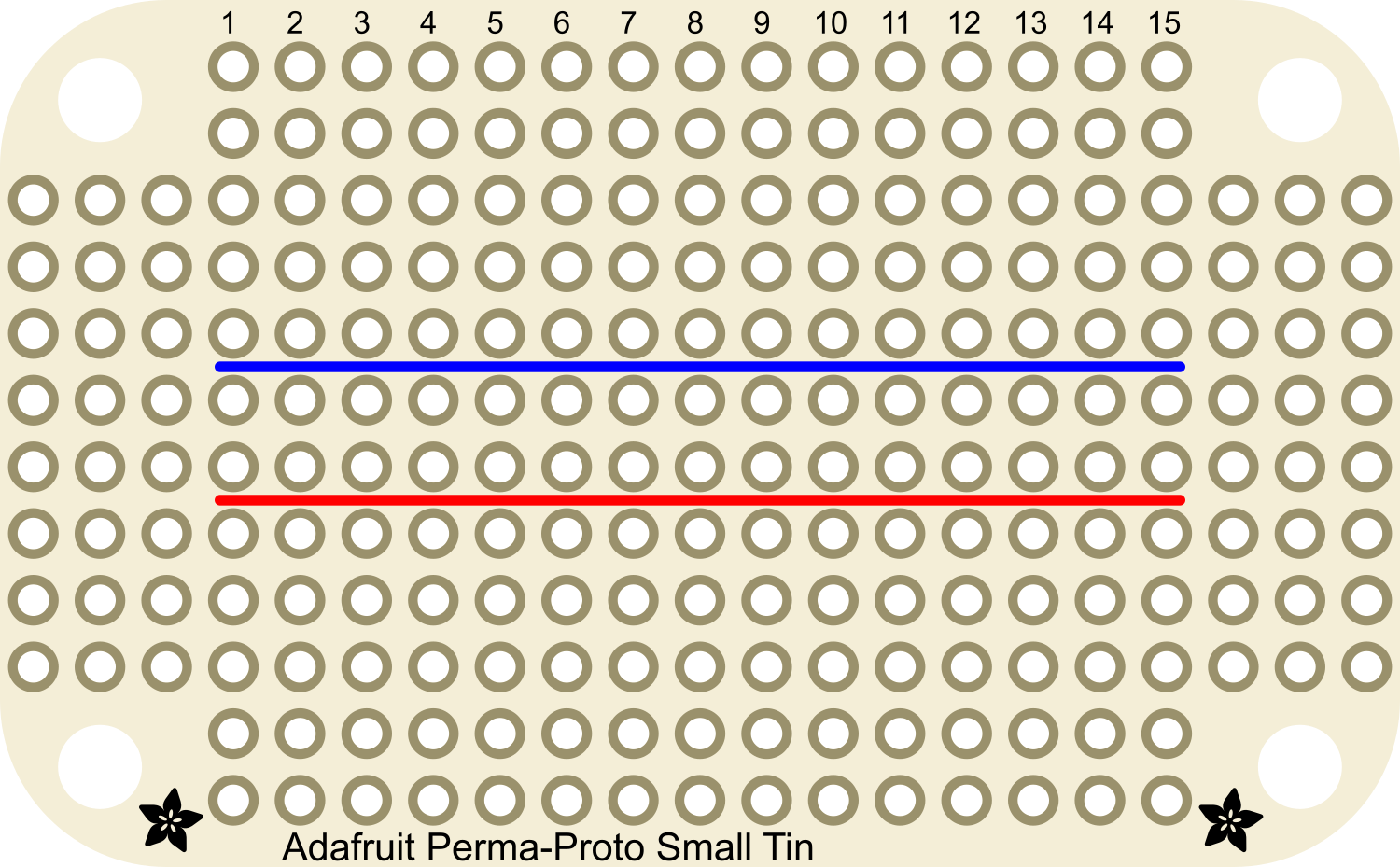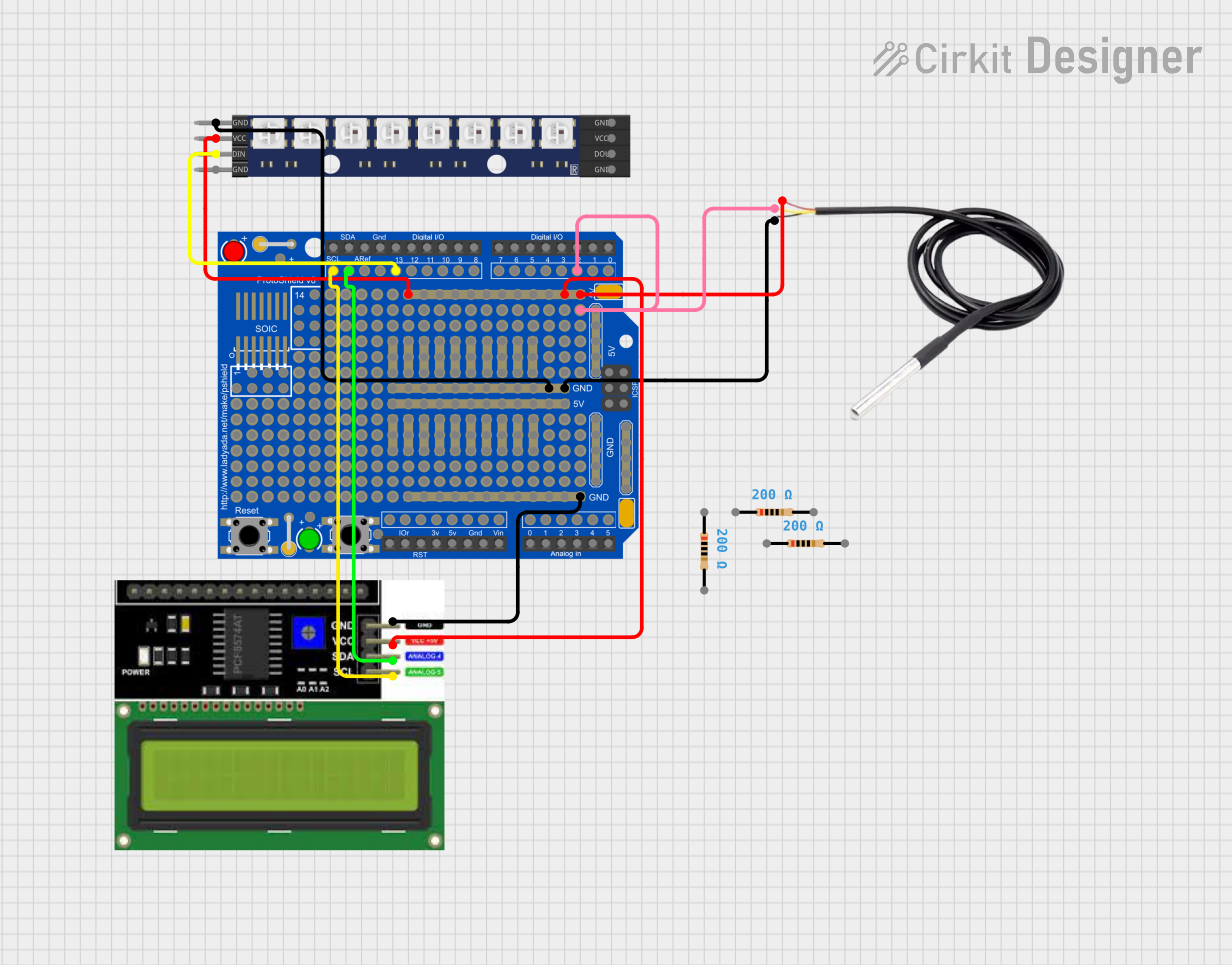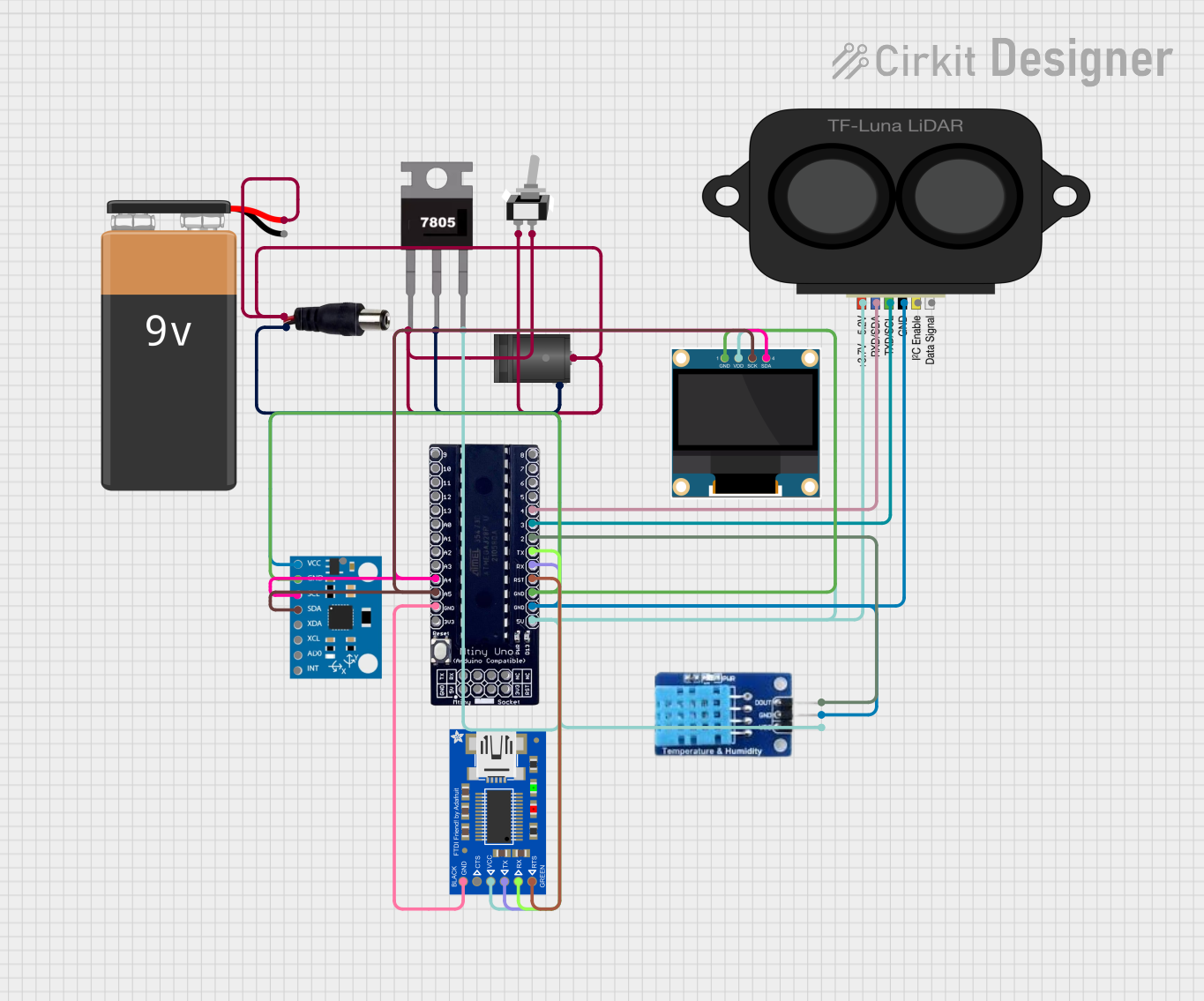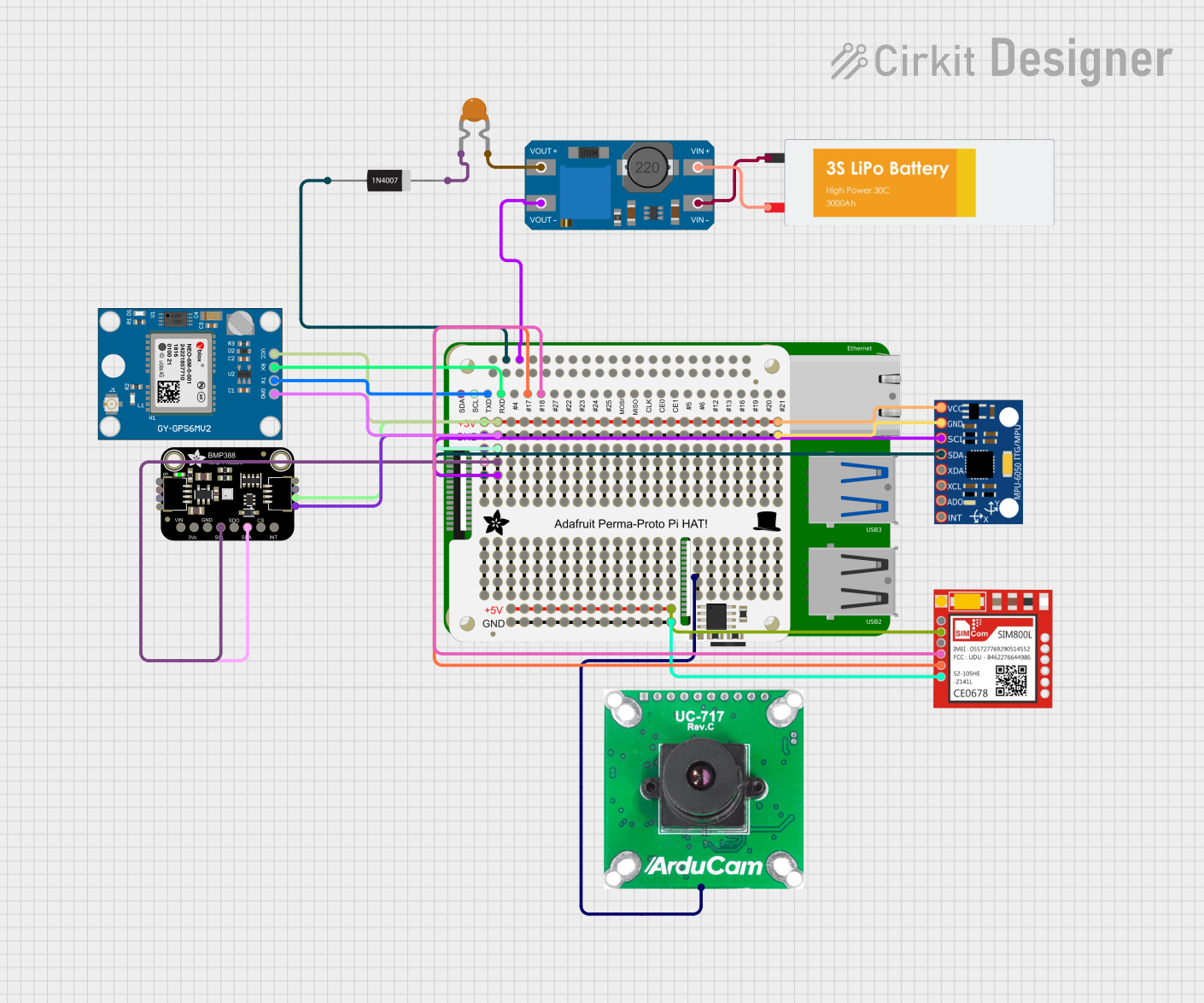
How to Use Adafruit Perma Proto Small Mint: Examples, Pinouts, and Specs

 Design with Adafruit Perma Proto Small Mint in Cirkit Designer
Design with Adafruit Perma Proto Small Mint in Cirkit DesignerIntroduction
The Adafruit Perma Proto Small Mint is a compact, solderable prototyping board designed for creating permanent prototypes and electronic circuits. Its layout mirrors that of a standard breadboard, with interconnected holes spaced at a standard 0.1-inch (2.54mm) grid, allowing for easy transfer of circuits from a breadboard to a more durable and permanent platform. This board is ideal for small projects where space is at a premium and for hobbyists who want to give their temporary breadboard projects a long-lasting form.
Explore Projects Built with Adafruit Perma Proto Small Mint

 Open Project in Cirkit Designer
Open Project in Cirkit Designer
 Open Project in Cirkit Designer
Open Project in Cirkit Designer
 Open Project in Cirkit Designer
Open Project in Cirkit Designer
 Open Project in Cirkit Designer
Open Project in Cirkit DesignerExplore Projects Built with Adafruit Perma Proto Small Mint

 Open Project in Cirkit Designer
Open Project in Cirkit Designer
 Open Project in Cirkit Designer
Open Project in Cirkit Designer
 Open Project in Cirkit Designer
Open Project in Cirkit Designer
 Open Project in Cirkit Designer
Open Project in Cirkit DesignerCommon Applications and Use Cases
- Permanent circuit prototypes
- Small electronic projects
- Educational purposes for learning soldering and circuit design
- DIY electronics, such as custom controllers, wearables, and IoT devices
Technical Specifications
Key Technical Details
- Dimensions: 1.8" x 1.4" x 0.0625" (46mm x 36mm x 1.6mm)
- Hole Spacing: 0.1" (2.54mm)
- Hole Diameter: Approximately 0.038" (0.97mm)
- Material: FR4 with a green solder mask
- Copper Thickness: 1 oz per square foot
- Plating: Tin
- Number of Holes: 160 total (20 rows of 8 holes each)
Pin Configuration and Descriptions
The Adafruit Perma Proto Small Mint does not have a traditional pin configuration as it is a prototyping board. However, the board features a series of interconnected holes that are grouped as follows:
| Group | Description |
|---|---|
| Power Rails | Two sets of horizontal lines along the edges for power distribution |
| Vertical Strips | 5-hole vertical strips that are electrically connected, mimicking a breadboard's layout |
Usage Instructions
How to Use the Component in a Circuit
Design Your Circuit: Begin by designing your circuit on a breadboard or schematic software to ensure proper functionality before transferring it to the Perma Proto board.
Transfer the Design: Once the design is tested, transfer the layout to the Perma Proto board by placing components in the same relative positions.
Soldering: Solder the components onto the board. Use a soldering iron with a fine tip and solder with a small diameter to make precise connections.
Connect the Components: Use jumper wires or cut small pieces of solid-core wire to make connections between the components following your design.
Power Distribution: Utilize the power rails for distributing power and ground connections across the board.
Final Inspection: After soldering, inspect all connections for cold solder joints or shorts. Use a multimeter to check for continuity and correct any issues.
Important Considerations and Best Practices
- Soldering: Ensure that the soldering iron is at the correct temperature (around 350°C) and that you use lead-free solder for environmental reasons.
- Component Orientation: Pay attention to the polarity of components like diodes, capacitors, and ICs.
- Trace Current: Be mindful of the current each trace will carry to avoid damage.
- Inspection: Regularly inspect the board for solder bridges or loose connections.
- Safety: Always work in a well-ventilated area when soldering.
Troubleshooting and FAQs
Common Issues Users Might Face
- Cold Solder Joints: A dull or grainy appearance may indicate a bad solder joint. Reheat the joint and add a small amount of solder if necessary.
- Short Circuits: Use a magnifying glass to inspect for accidental solder bridges between adjacent pads.
- Component Malfunction: If a component isn't working, check its orientation and solder connections.
Solutions and Tips for Troubleshooting
- Desoldering: If you need to remove a component, use desoldering braid or a desoldering pump to clear the solder from the pad and pin.
- Testing: Use a multimeter to test connections and ensure that there are no shorts or opens in the circuit.
- Reflowing Solder: If a connection looks suspect, reflow the solder by reheating the joint and adding a small amount of fresh solder.
FAQs
Q: Can I reuse the Perma Proto board? A: The board is intended for permanent use, but components can be desoldered with care. However, the board may be damaged through multiple soldering cycles.
Q: Is the board breadboard-compatible? A: Yes, the layout is designed to mimic a breadboard, making it easy to transfer circuits directly.
Q: How much current can the traces handle? A: The traces can handle a few hundred milliamps of current. For higher currents, reinforce the traces with additional solder or use external wires.
Q: Can I cut the board to a smaller size? A: Yes, the board can be cut using a PCB shear or a fine-toothed saw, but be cautious of creating sharp edges and damaging the layout.
For any further assistance or questions, please refer to the Adafruit community forums or contact Adafruit support.